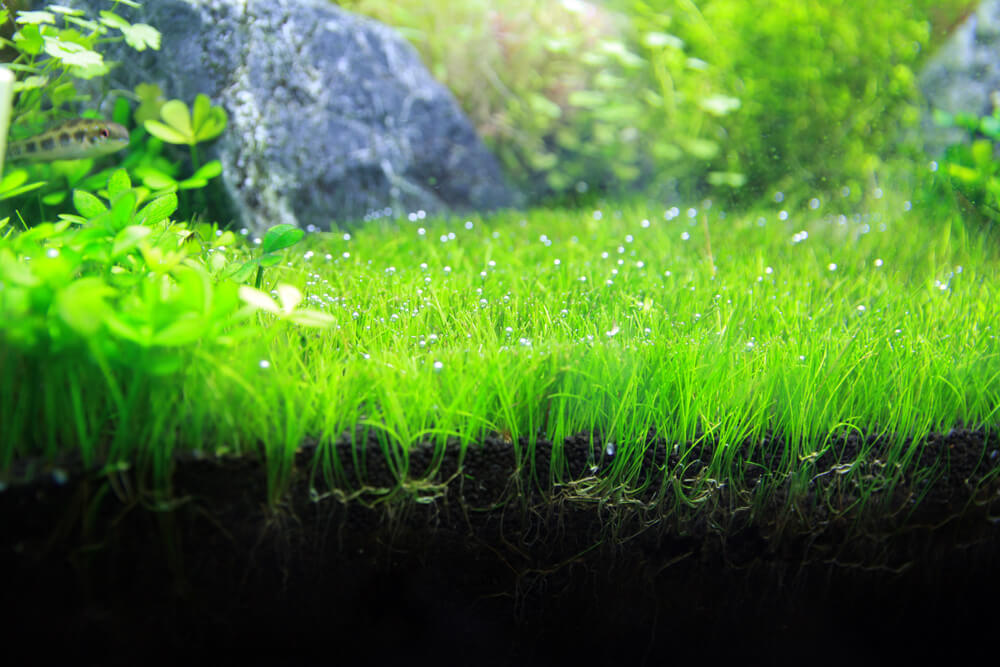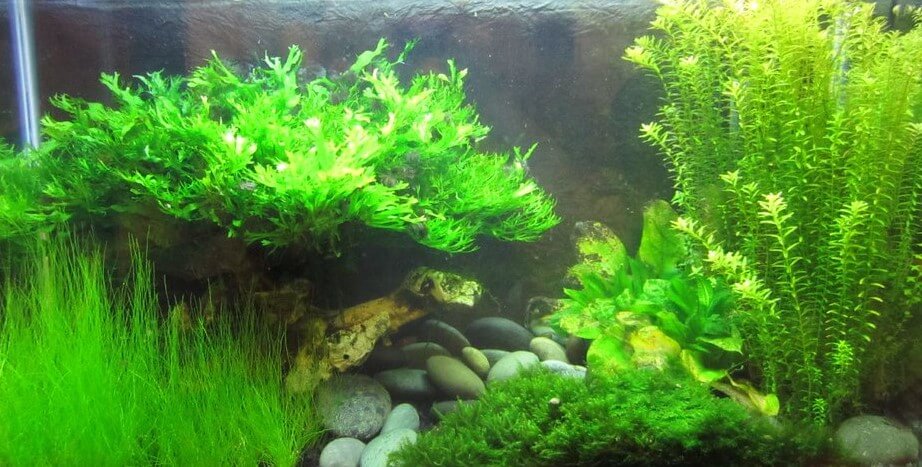Growing Dwarf Hairgrass Without CO2: Is It Possible?
Posted by Miles Harrison on 11/30/2022
If you’re into the planted tank scene, then you’ve probably heard about Dwarf Hairgrass. This plant is a staple in the aquarium hobby, and it’s one of the most common foreground carpeting plants.
Its popularity is for good reason, it’s a resilient and attractive plant. Besides, who doesn’t like the look of a beautiful carpet growing along the substrate of a tank? If you’re considering adding this plant to your aquarium, you may be wondering if you need to supplement CO2 to grow this plant. In this post, we’re going to discuss whether this is possible, and the effect that CO2 has on this wonderful plant.
December's Giveaways on Light Fish
Dwarf Hairgrass Plant Summary
Dwarf Hairgrass (scientific name: Eleocharis Parvula) is a beautiful plant that grows at a moderate pace in an aquarium environment. This plant has been used as a carpeting plant for award-winning aquascapes, and it’s one of the most recommended carpeting plants for beginners looking to add a carpeting plant to their aquarium.
The plant is widespread throughout the world and can be found in Europe and North America. It has even been documented in Eastern Russia, Japan, and Brazil where it can be found in brackish marshlands.
Few available aquarium plants resemble terrestrial grass plants, making dwarf hairgrass highly sought after by experienced and beginner hobbyists. While this plant may look easy to care for, there are still a few things you should be aware of before handling this plant species.

Growing Dwarf Hairgrass With CO2 vs Without CO2
It is possible to grow Dwarf Hairgrass without CO2. However, you will not be able to achieve the lawn-like appearance that you often associate with this foreground plant.
If you inject your tank with CO2, you will have much faster growth rates. Your Dwarf Hairgrass will spread quickly, and it will show off some of its brightest colorations if under high-light conditions.
If you don’t plan on injecting CO2, you’ll want to meet all of the basic requirements for keeping this plant.
Care Requirements
Without CO2, you’ll want to have soft to moderately hard water. Aim for a pH range between 6.5 and 7.5. You’ll need at least low to moderate lighting, if you have a PAR meter, a reading of 30 PAR along the substrate should be sufficient. If you’ve recently purchased Dwarf Hairgrass, make sure to allow for a 1-2 week transition period. Don’t be surprised if you’re not seeing any signs of new growth until this period ends.
We highly recommend a nutrient-rich substrate, such as Fluval's Stratum or Bio-Statum. Although the nutrients provided by these substrates will lessen over time, they provide a nice buffer for preventing nutrient deficiencies.
With CO2, you’re going to want to dose additional nutrients. Potassium nitrate and Monopotassium phosphate can be dosed directly into the water column. Liquid solutions such as Seachem’s Flourish can be used instead of dry dosing if you prefer.
You’ll want to perform weekly 50% water changes to prevent the accumulation of excess nutrients. Otherwise, you’ll run into algae that you’ll need to remove.
🛒 Shop Aquarium Plants Fish on Light Fish
Appearance and Growth
Dwarf Hairgrass has a needle-like appearance. As a member of the Eleocharis genus, it has photosynthetic stems but no leaves. With frequent trimming, unique carpets can be shaped and formed, but if you plan on skipping CO2 injection, this plant's appearance will differ.
With CO2 Injection
When plenty of CO2 is available, this plant will grow rapidly. Frequent trimmings will allow this plant to spread runners at a fast rate, which results in many additional stems. Having plenty of surface movement and a nutrient-rich water column will produce healthy stems.
Without CO2 Injection
If you don’t add CO2 and choose to keep this plant under low to moderate lighting, you can’t expect much in terms of growth rate. You may only see runners produce a few new stems once every few months.
If you notice your plant turning yellow, which is typically a symptom of nutrient deficiency, it’s unlikely it will produce any new stems until the deficiency is fixed.

Aquascaping Ideas
Now that you’ve learned what to expect from this plant, there are a few interesting aquascapes you can create depending on if you choose to add CO2 or not.
In tanks without CO2, you can use Dwarf Hairgrass as a midground plant. This plant can grow up to 4 inches in height, but don’t expect this plant to grow along the substrate. If you're looking for a low-light carpeting plant that doesn't require CO2, consider Java Moss or Staurogyne repens. Other low-light plants like Anubias Frazeri can be included to create an attractive and low-maintenance aquarium.
With CO2, you can easily achieve the thick carpets people share pictures of online and on social media. Provide plenty of light, surface movement, nutrients, and weekly water changes. Combined with frequent trimming, you’ll have a lush carpet in no time.
🛒 Shop Freshwater Fish on Light Fish
Conclusion
Now that you’ve learned that it’s possible to keep Dwarf Hairgrass without CO2, do you think you’ll incorporate this plant into your next aquascape? We guarantee you’ll love all that this plant has to offer whether you choose to inject CO2 or not.
If you’re interested in aquatic plants, check out our community forum where we discuss planted tanks and everything else related to aquariums.
December's Giveaways on Light Fish










